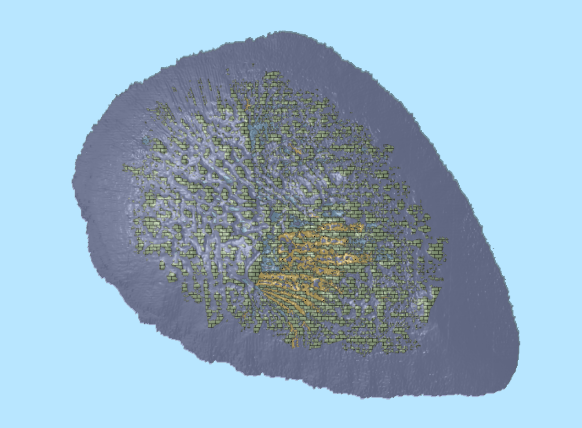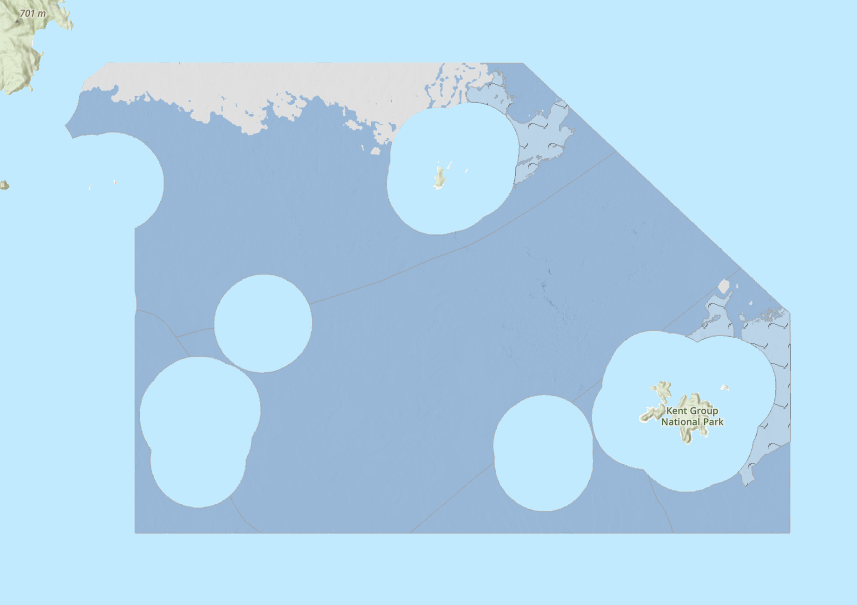Geomorphology
Type of resources
Keywords
Publication year
Service types
Topics
-
Here we present the surficial geology map for the Vestfold Hills, East Antarctica. On the coast of Prydz Bay, the region is one of the largest ice-free areas in Antarctica. Surficial geology mapping at 1:2000 was undertaken with field observations in the 2018/19 and 2019/20 summer seasons as well as aerial photography and satellite imagery interpretation. Units are based on the Geological Survey of Canada Surficial Data Model Version 2.4.0 (Deblonde et al 2019).
-
A high-resolution multibeam echosounder (MBES) dataset covering over 279,000 km2 was acquired in the southeastern Indian Ocean to assist the search for Malaysia Airlines Flight 370 (MH370) that disappeared on 8 March 2014. The data provided an essential geospatial framework for the search and is the first large-scale coverage of MBES data in this region. Here we report on geomorphic analyses of the new MBES data, including a comparison with the Global Seafloor Geomorphic Features Map (GSFM) that is based on coarser resolution satellite altimetry data, and the insights the new data provide into geological processes that have formed and are currently shaping this remote deepsea area. Our comparison between the new MBES bathymetric model and the latest global topographic/bathymetric model (SRTM15_plus) reveals that 62% of the satellite-derived data points for the study area are comparable with MBES measurements within the estimated vertical uncertainty of the SRTM15_plus model (± 100 m). However, > 38% of the SRTM15_plus depth estimates disagree with the MBES data by > 100 m, in places by up to 1900 m. The new MBES data show that abyssal plains and basins in the study area are significantly more rugged than their representation in the GSFM, with a 20% increase in the extent of hills and mountains. The new model also reveals four times more seamounts than presented in the GSFM, suggesting more of these features than previously estimated for the broader region. This is important considering the ecological significance of high-relief structures on the seabed, such as hosting high levels of biodiversity. Analyses of the new data also enabled sea knolls, fans, valleys, canyons, troughs, and holes to be identified, doubling the number of discrete features mapped. Importantly, mapping the study area using MBES data improves our understanding of the geological evolution of the region and reveals a range of modern sedimentary processes. For example, a large series of ridges extending over approximately 20% of the mapped area, in places capped by sea knolls, highlight the preserved seafloor spreading fabric and provide valuable insights into Southeast Indian Ridge seafloor spreading processes, especially volcanism. Rifting is also recorded along the Broken Ridge – Diamantina Escarpment, with rift blocks and well-bedded sedimentary bedrock outcrops discernible down to 2400 m water depth. Modern ocean floor sedimentary processes are documented by sediment mass transport features, especially along the northern margin of Broken Ridge, and in pockmarks (the finest-scale features mapped), which are numerous south of Diamantina Trench and appear to record gas and/or fluid discharge from underlying marine sediments. The new MBES data highlight the complexity of the search area and serve to demonstrate how little we know about the vast areas of the ocean that have not been mapped with MBES. The availability of high-resolution and accurate maps of the ocean floor can clearly provide new insights into the Earth's geological evolution, modern ocean floor processes, and the location of sites that are likely to have relatively high biodiversity. <b>Citation:</b> Kim Picard, Brendan P. Brooke, Peter T. Harris, Paulus J.W. Siwabessy, Millard F. Coffin, Maggie Tran, Michele Spinoccia, Jonathan Weales, Miles Macmillan-Lawler, Jonah Sullivan, Malaysia Airlines flight MH370 search data reveal geomorphology and seafloor processes in the remote southeast Indian Ocean, <i>Marine Geology</i>, Volume 395, 2018, Pages 301-319, ISSN 0025-3227, https://doi.org/10.1016/j.margeo.2017.10.014.
-
This OGC Web Feature Service (WFS) contains geospatial seabed morphology and geomorphology information for Cairns Seamount within the Coral Sea Marine Park and are intended for use by marine park managers, regulators, the general public and other stakeholders. This web service uses the data product published in McNeil et al. (2023); eCat Record 147998.
-
This OGC Web Feature Service (WFS) contains geospatial seabed morphology and geomorphology information for the Beagle Marine Park (South-east Marine Parks Network) and is intended for use by marine park managers, regulators and other stakeholders. This web service uses the data product published in Nanson et al. (2023); eCat Record 147976.
-
This OGC Web Feature Service (WFS) contains seabed morphology and geomorphology information for a subset area of Zeehan Marine Park (South-east Marine Parks Network) and is intended for use by marine park managers, regulators and other stakeholders. This web service uses the data product published in McNeil et al. (2023); eCat Record 148620.
-
This OGC Web Map Service (WMS) contains seabed morphology and geomorphology information for a subset area of Zeehan Marine Park (South-east Marine Parks Network) and is intended for use by marine park managers, regulators and other stakeholders. This web service uses the data product published in McNeil et al. (2023); eCat Record 148620.
-
The service contains the Australian Coastal Geomorphology Smartline, used to support a national coastal risk assessment. The 'Smartline' is a representation of the geomorphic features located within 500m of the shoreline, denoted by the high water mark. The service includes geomorphology themes and stability classes.
-
This ESRI map (web) service contains geospatial seabed morphology and geomorphology information for Cairns Seamount within the Coral Sea Marine Park and are intended for use by marine park managers, regulators, the general public and other stakeholders. This web service uses the data product published in McNeil et al. (2023); eCat Record 147998.
-
This ESRI map (web) service contains geospatial seabed morphology and geomorphology information for the Beagle Marine Park (South-east Marine Parks Network) and is intended for use by marine park managers, regulators and other stakeholders. This web service uses the data product published in Nanson et al. (2023); eCat Record 147976.
-
This ESRI map (web) service contains geospatial seabed morphology and geomorphology information for Flinders Reefs within the Coral Sea Marine Park and are intended for use by marine park managers, regulators, the general public and other stakeholders. This web service uses the data product published in McNeil et al. (2023); eCat Record 147998.



